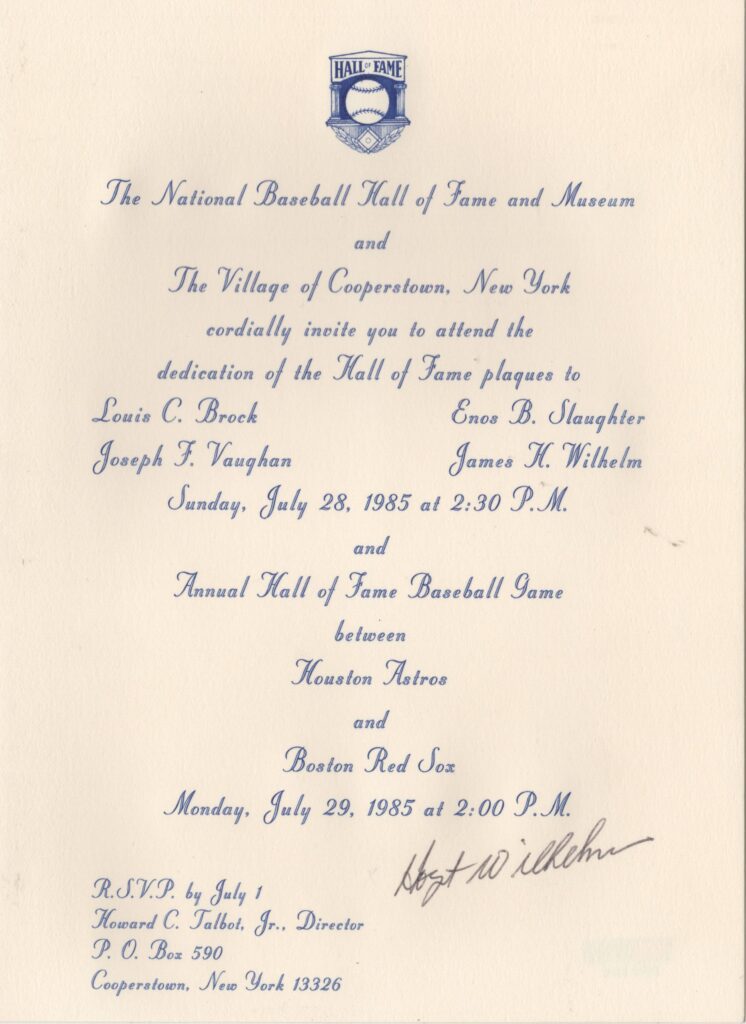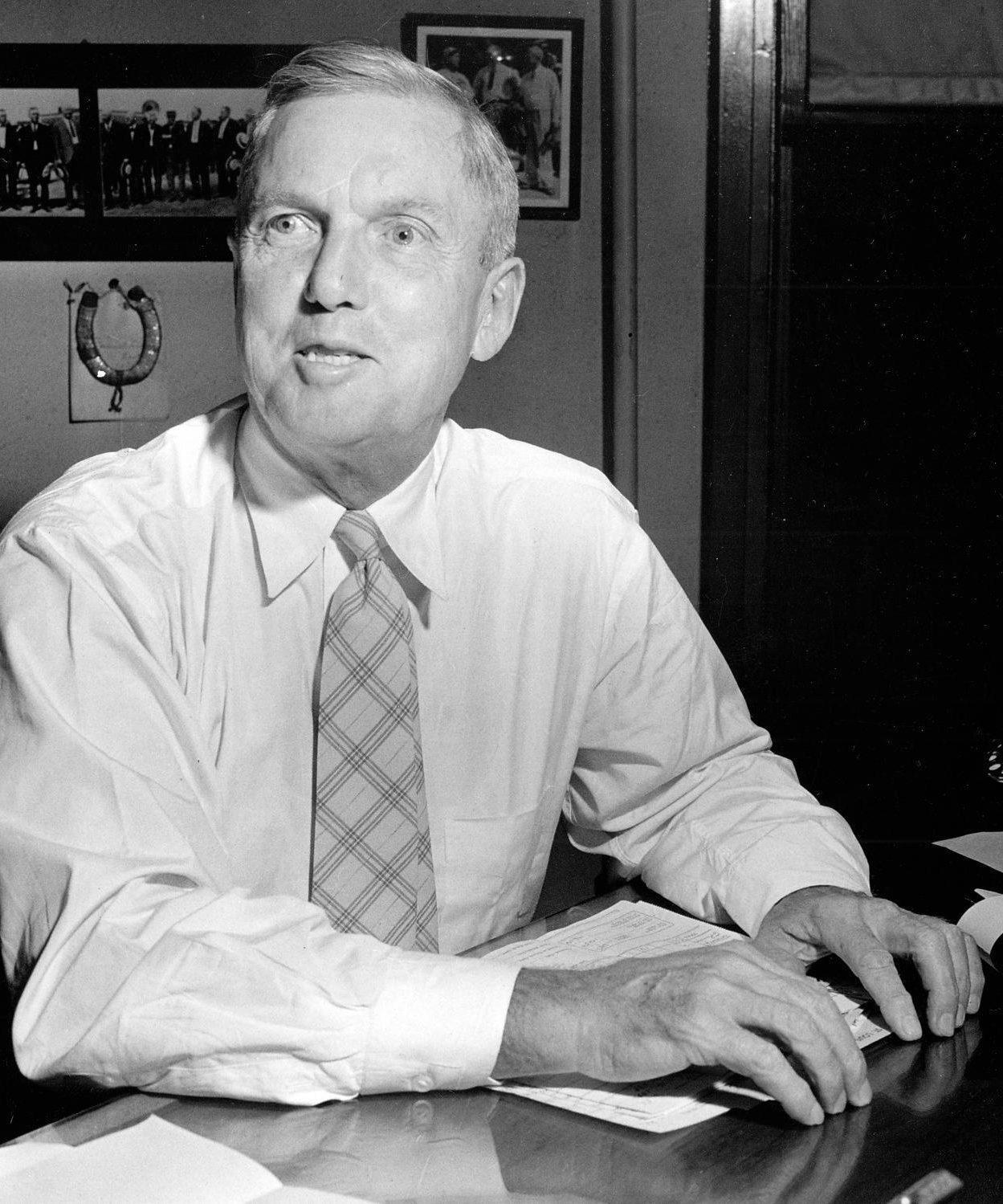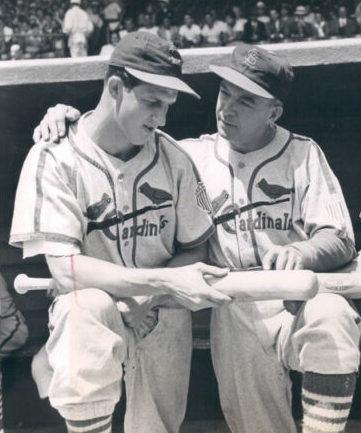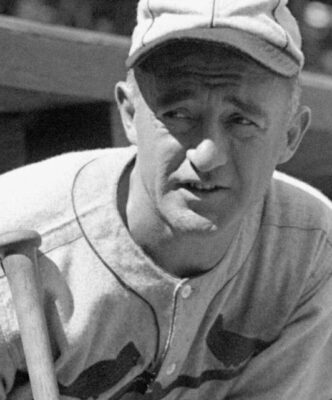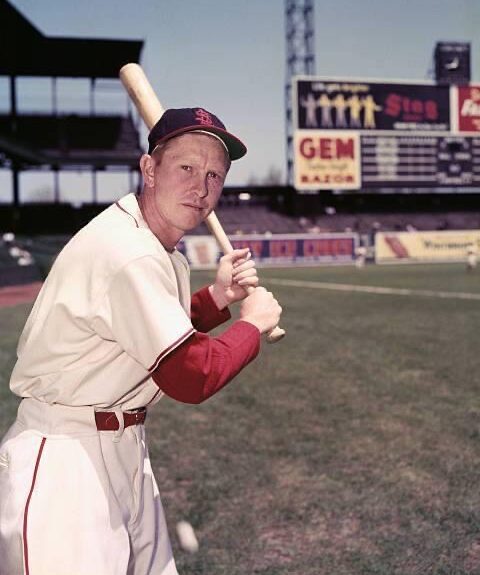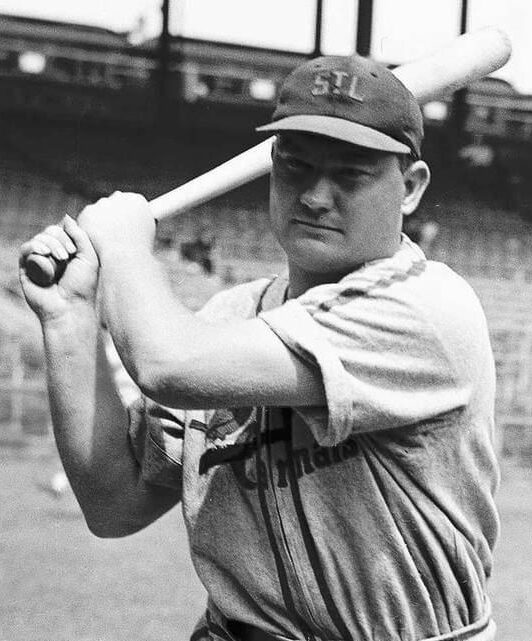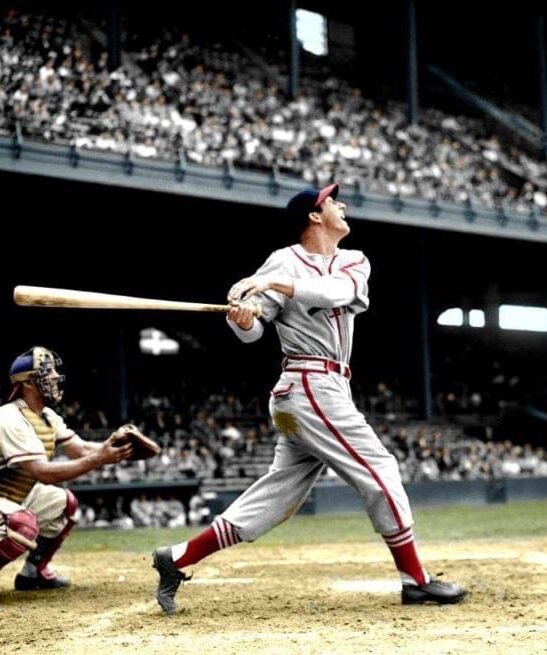Enos Slaughter
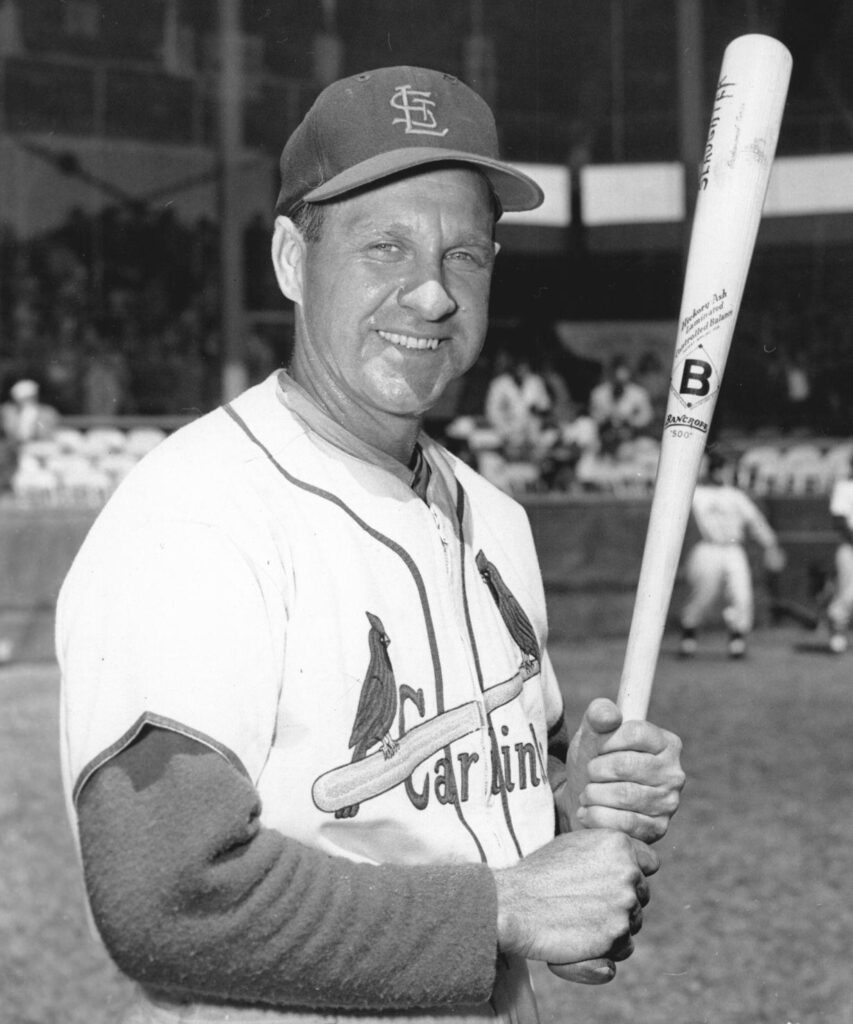
| Birthdate | 4/27/1916 |
| Death Date | 8/12/2002 |
| Debut Year | 1938 |
| Year of Induction | 1985 |
| Teams | Athletics, Braves, Cardinals, Yankees |
| Position | Right Field |
After All Star appearances in 1941 & 1942, Enos Slaughter missed 1943-1945 due to WWII. When he returned, he made 8 straight All Star games.
Leave a commentIn the collection:
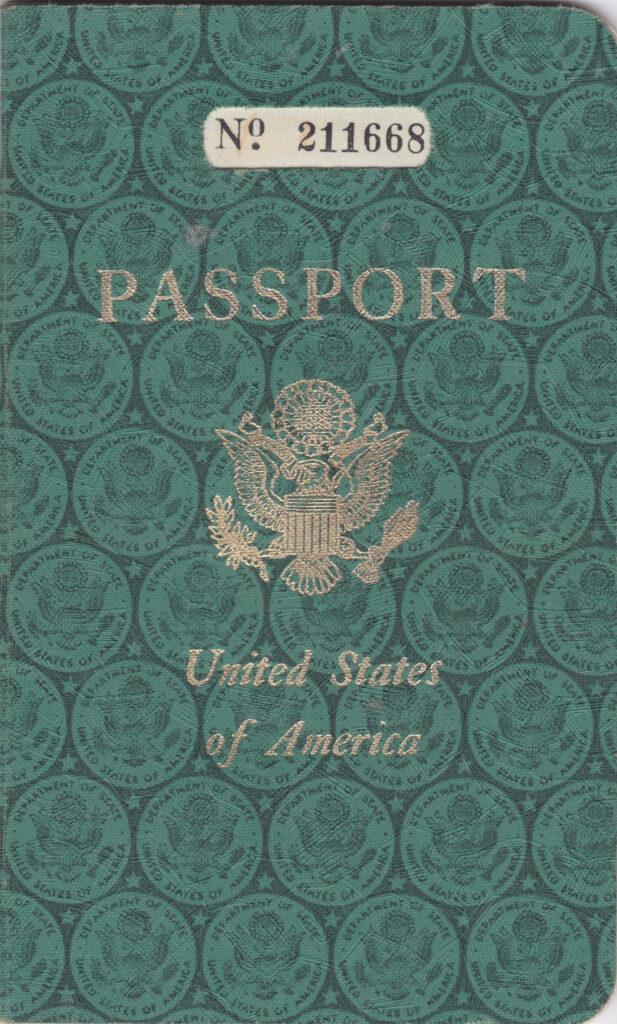
Enos Slaughter's first passport - for 1953 MLB goodwill tour of Japan
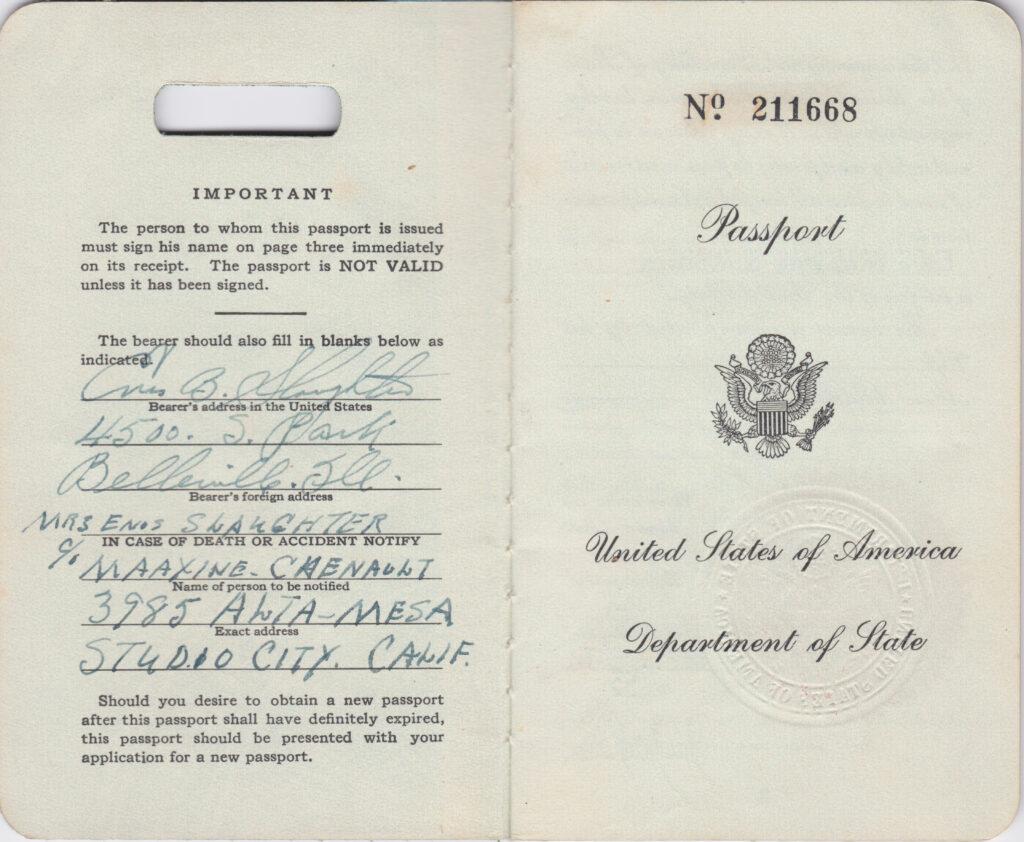
First two pages inside Enos Slaughter's first passport
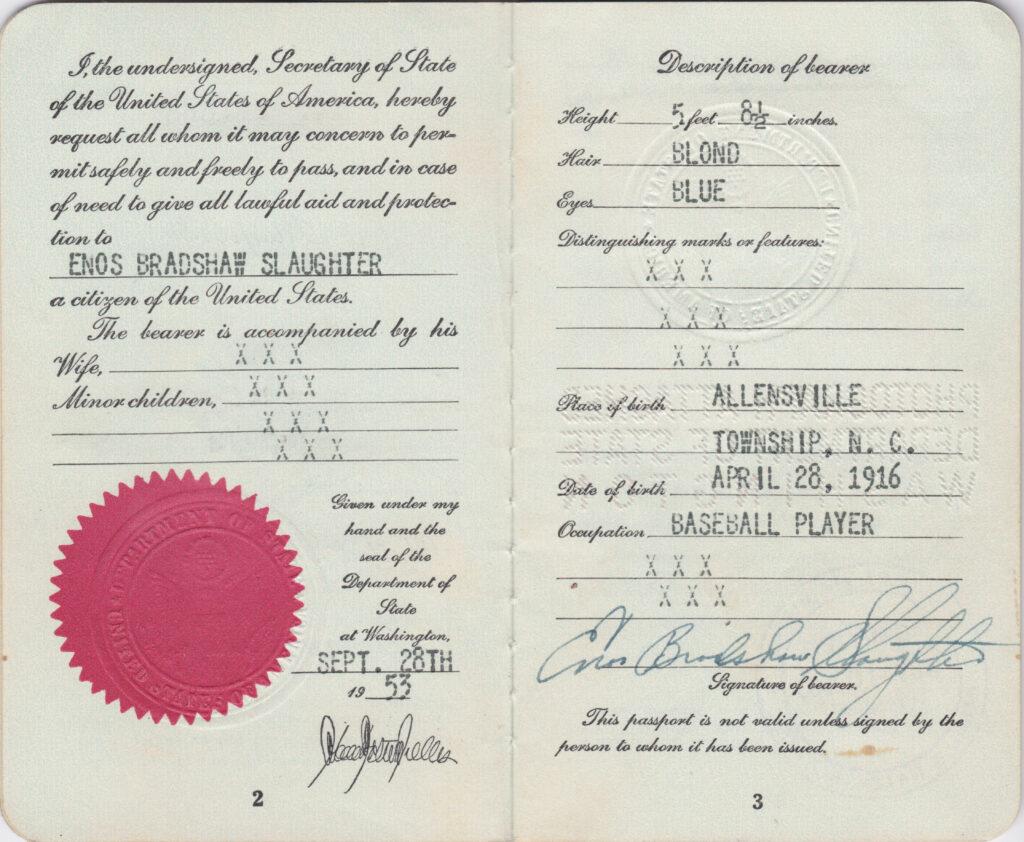
The Hall of Famer signs his full name on this page
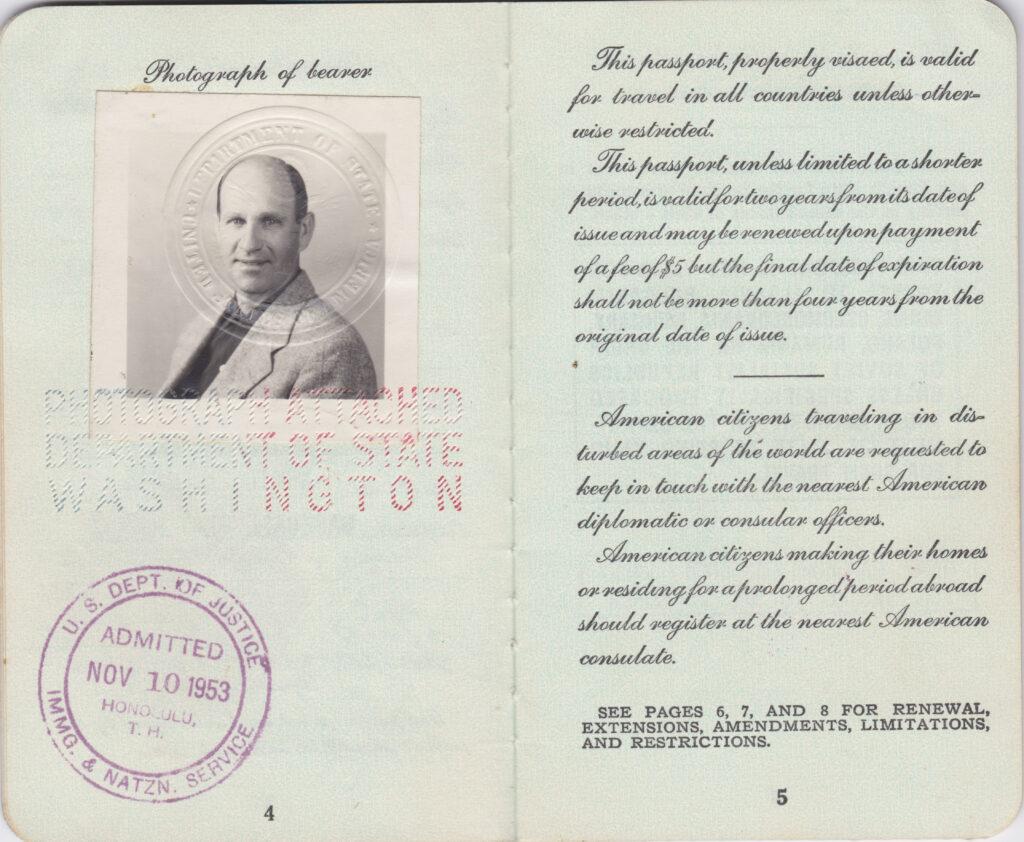
Picture of Enos Slaughter's inside his passport
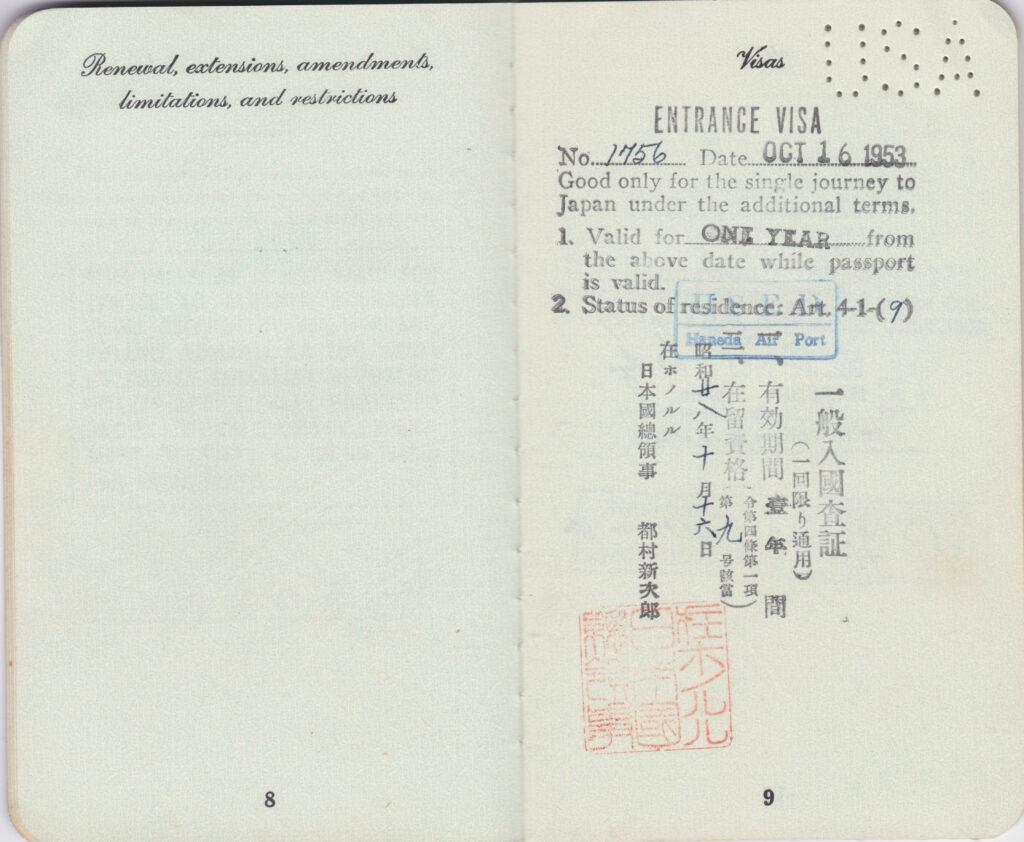
Visa for entrance into Japan in Enos Slaughter's first passport
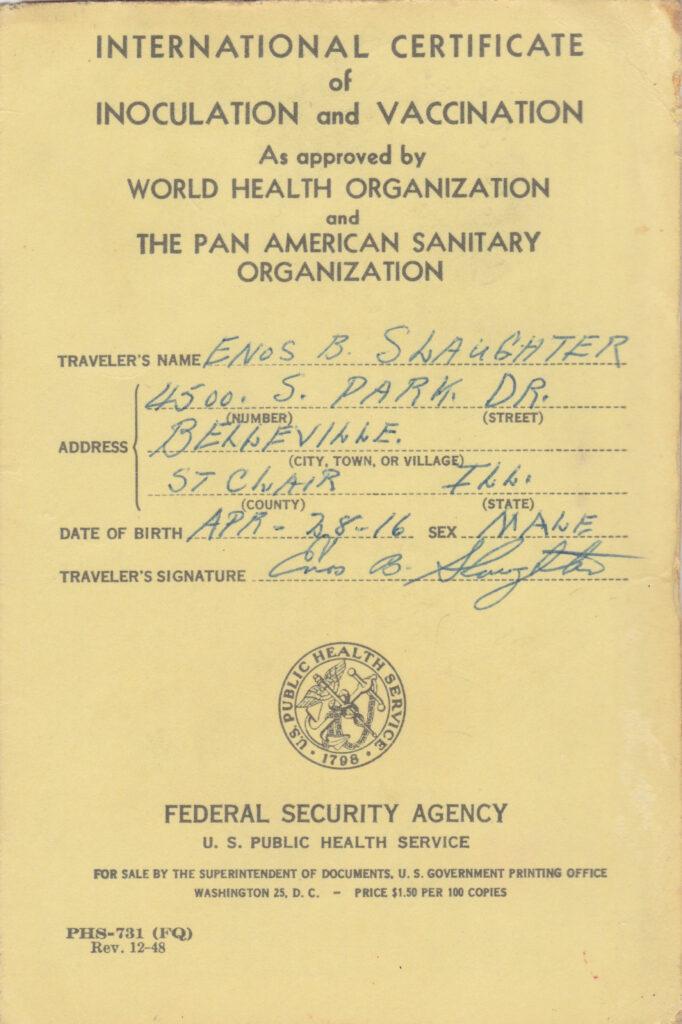
International Certificate of Inoculation and Vaccination for Enos Slaughter
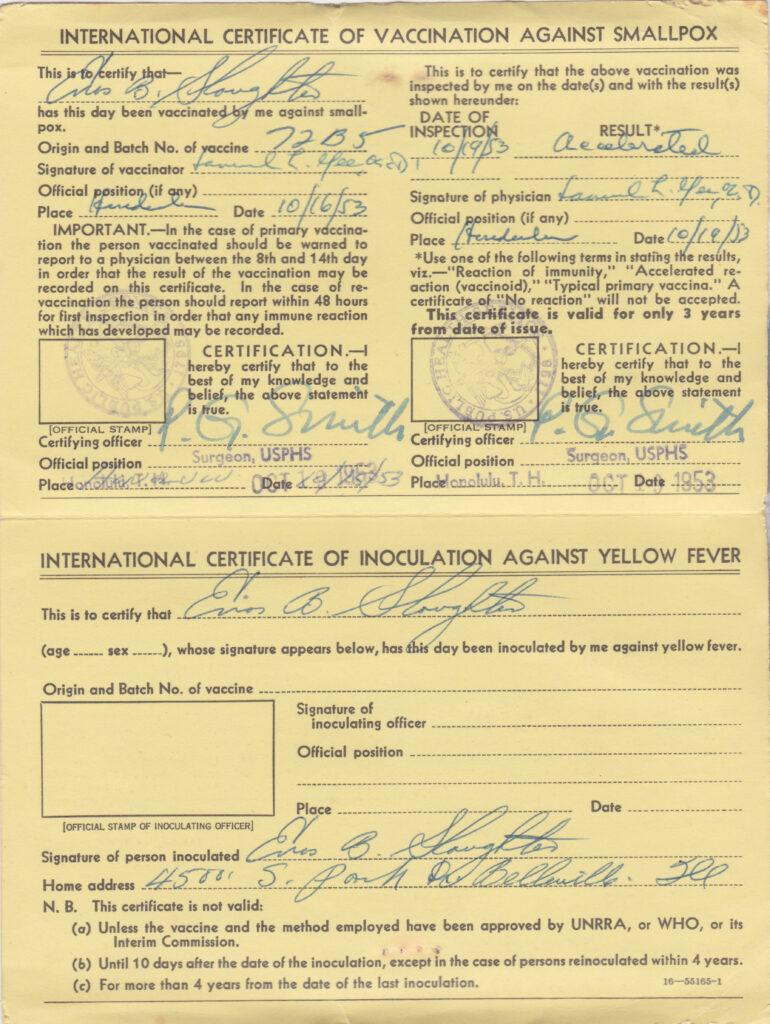
Inside of the Certificate of Vaccination against smallpox
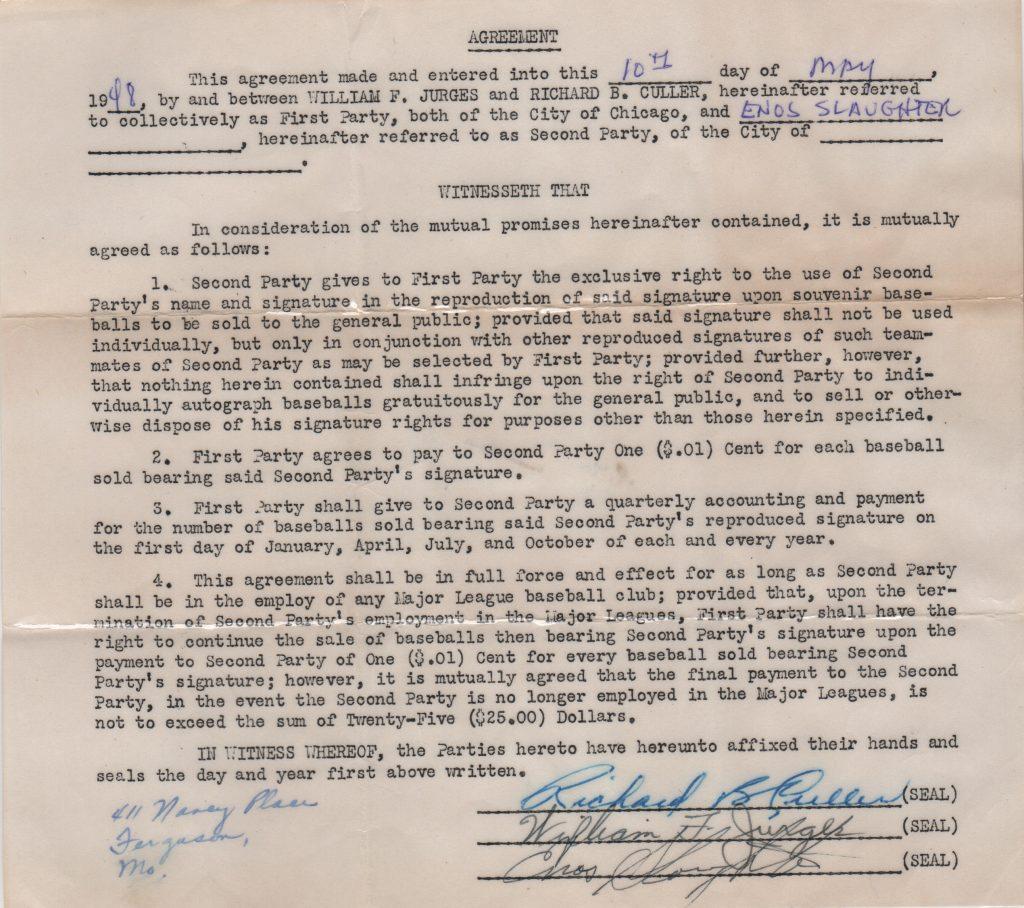
1948 Autoball contract signed by Enos Slaughter
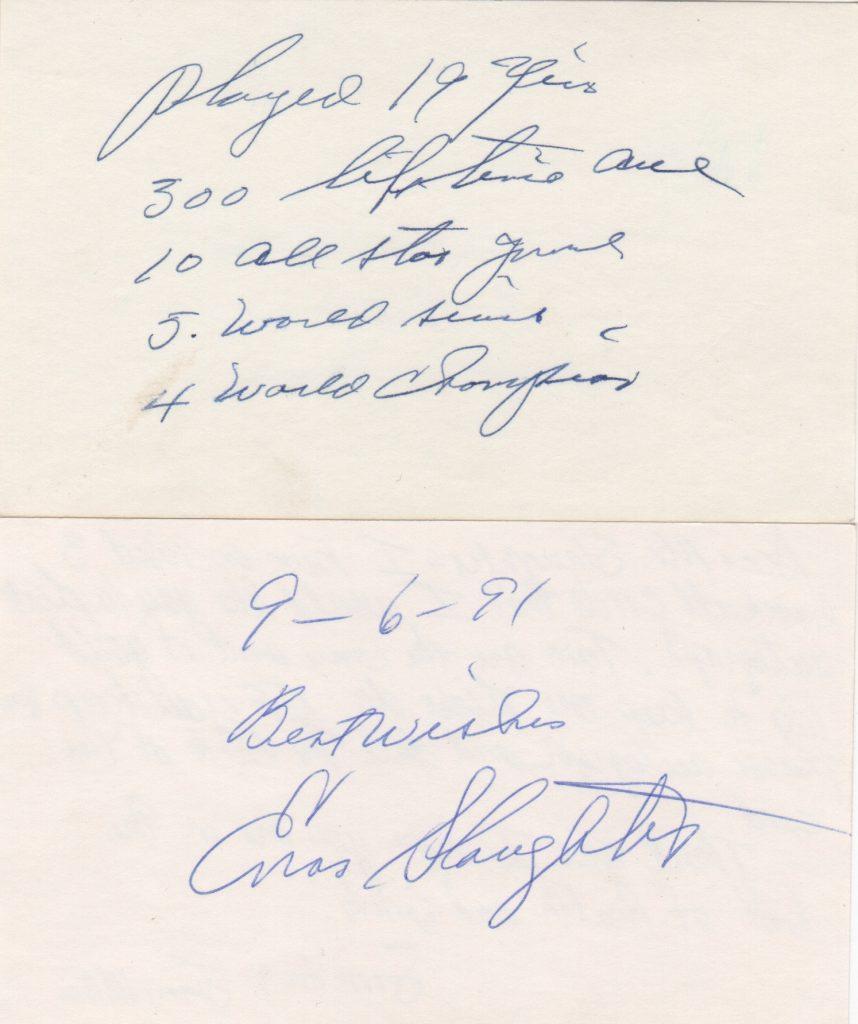
Enos Slaughter 3x5 cards with inscription
